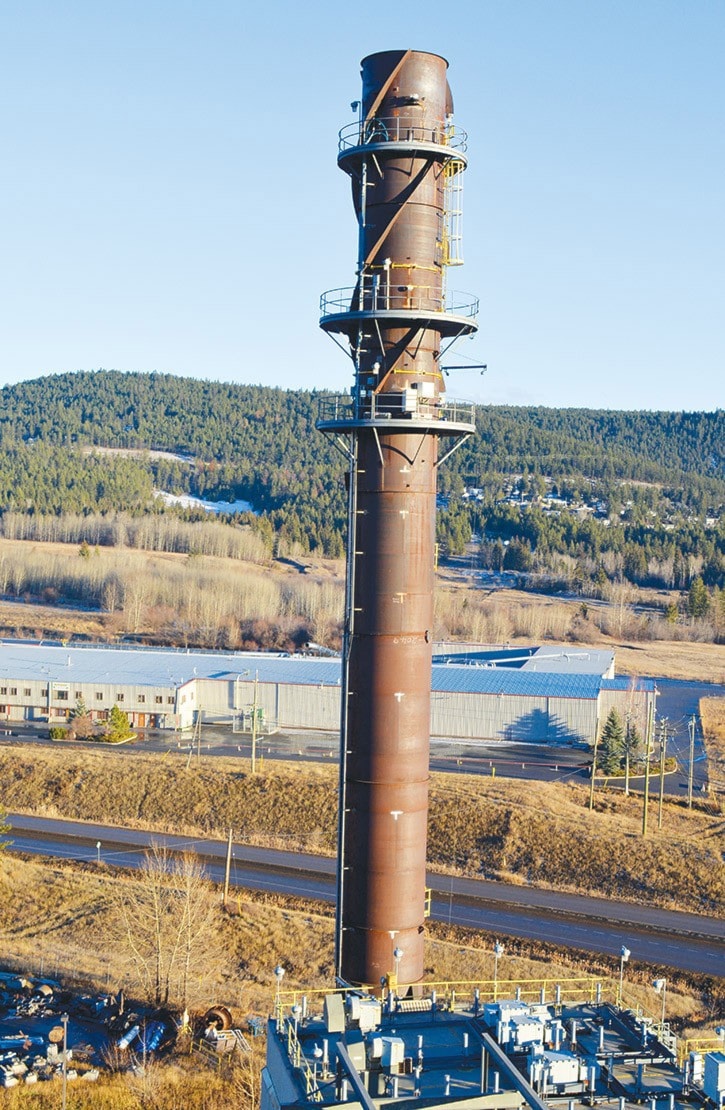Thirteen appeals have been submitted against Atlantic Power Corporation’s request to burn up to 50 per cent rail ties at its biomass-fired generating facility in Williams Lake.
Nine of the appeals are against the company’s amended air emissions permit 8808 and four are against its ash landfill permit 8809, Colleen Smith, executive director of the Environmental Appeal Board, told the Tribune.
“The director under the environmental management act is applying to strike certain aspects of the appeals,” Smith said. “They are arguing that the appeals are trying to get at old parts of the permits, not the new aspects.”
Rail Ties Be Wise, an ad hoc group concerned about the impact of burning rail ties, said in a press release it is supporting an appeal from a concerned citizen about the ash landfill because of its location and chemicals in the ash.
“Dioxins and furans will increase in the ash landfill, potentially reaching levels of hazardous waste,” the group stated in a press release.
Ministry of Environment media spokesperson David Karn said the combustion residue (boiler ash) could potentially exceed the criteria established in the Hazardous Waste Regulation, so in the most recent permit amendment, the ministry statutory decision-maker included a clause prohibiting hazardous waste, as defined in the Regulation, from being deposited in the ash landfill.
“This decision is now the subject of an appeal,” Karn added.
Smith said she anticipated that responses from parties appealing and the government will be accepted by the board until Jan. 13, 2017.
After that the board will review all of the submissions, arguments, notices of appeal and the permits and issue a written decision which will get posted on its website.
“If there are appeals, at the end of the day to proceed then the board will ask the parties for their available dates and their witnesses’s available dates for an oral hearing some time later in the year,” Smith said, noting the appeal board usually tries to hold the hearings somewhere near where the issues are so probably in Williams Lake.
Becky Bravi, one of the appellants asking the province to reconsider the ash landfill permit, said the province’s application to strike the appeal places additional financial burden on citizens who are self-funding the appeal.
“Submitting appeals is a way for members of the public who have deep concerns to be heard,” Bravi said.
Also speaking for Rail Ties Be Wise, Jenny Noble said her group is very concerned about the health of the community.
“Emissions from burning rail ties will introduce sulfur dioxide and a cocktail of other noxious gasses into the airshed,” she said. “We are concerned about maintaining a positive community reputation, attracting new families, professionals and retirees who are looking for a toxin-free and affordable place to live.”
At its Tuesday, Dec. 6 meeting, city council discussed a letter from Sage Birchwater asking council to rescind its previous endorsement of rail tie burning at Atlantic Power.
“Since that application was put in by the company, a whole list of conditions have been put on the permit that speak to the concerns regarding environment, health, water and land,” Coun. Ivan Bonnell said.
Coun. Laurie Walters, however, said she was not in support of having rail ties burned in Williams Lake.
“We have to think of other ways to fuel the power plant,” Walters said.
Council agreed unanimously to receive Birchwater’s letter and refer it to the Ministry of Environment for more information.
